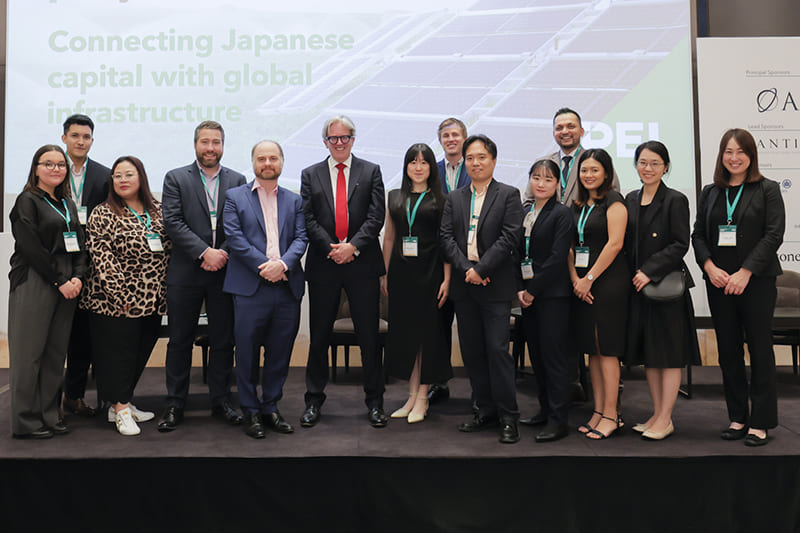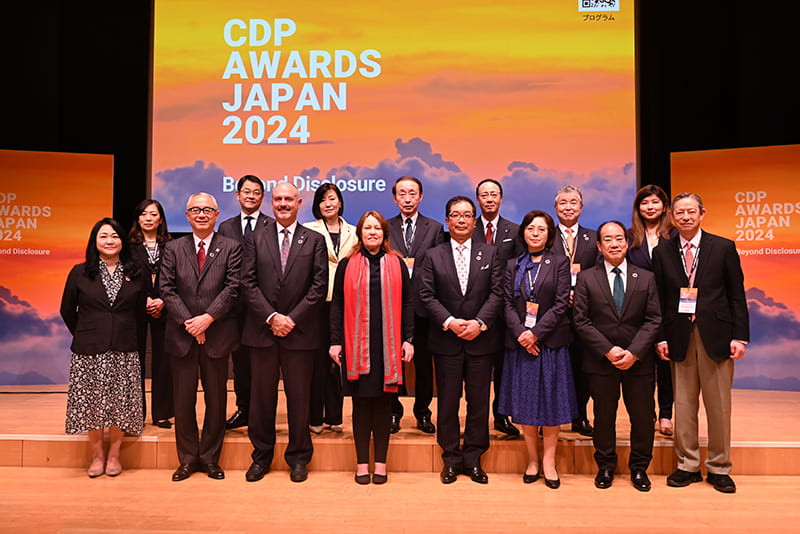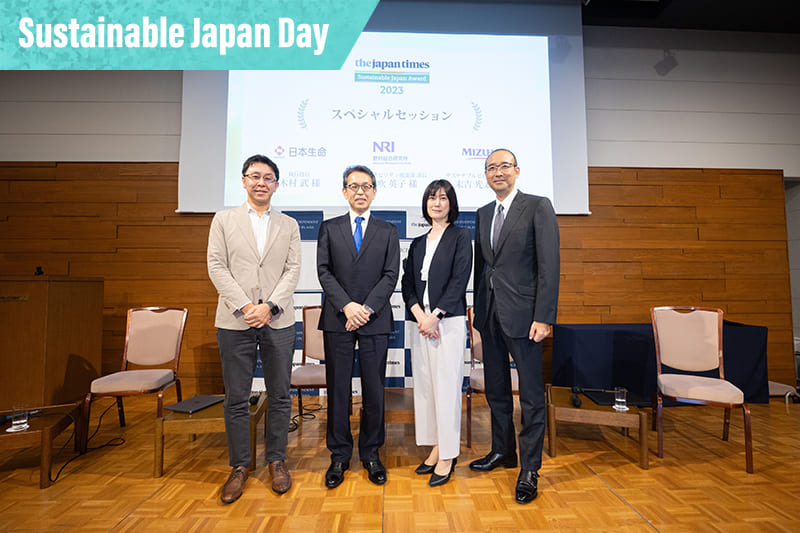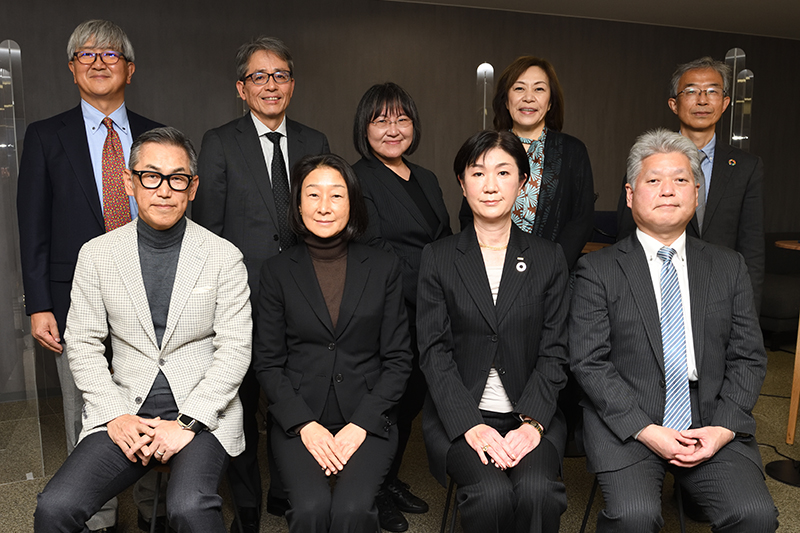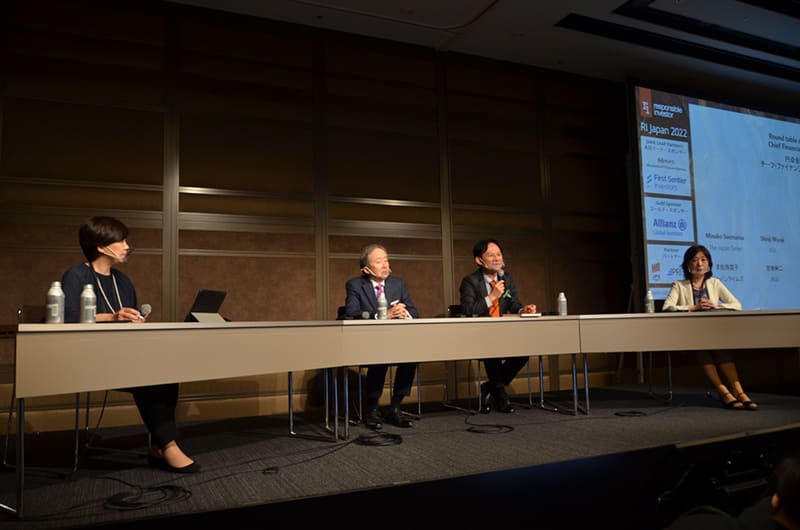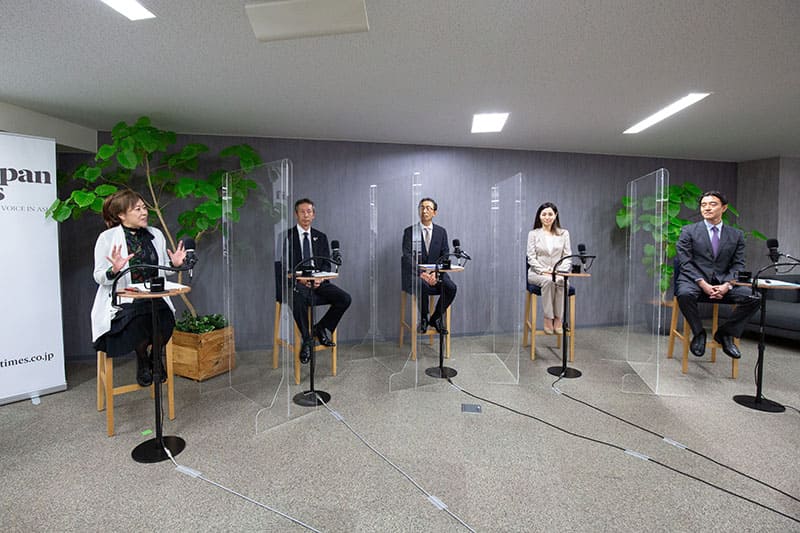October 27, 2023
PRI in Person brainstorms better responsible investing
Media sponsor
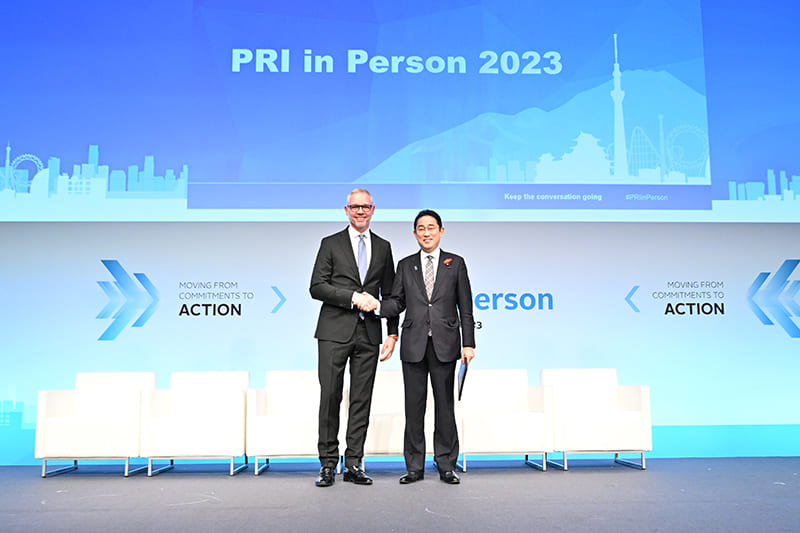
An annual global conference on responsible investment, PRI in Person, was held in Tokyo for the first time from Oct. 3 to 5. More than 1,300 delegates from 50 countries gathered to share insights on contributing to solutions for climate change, loss of natural areas and biodiversity, and human rights problems through collaborating with companies and policymakers.
Principles for Responsible Investment, a United Nations-backed network of institutional investors, held this year’s conference under the theme “Moving from commitments to action.” Speakers and panelists stressed that more efforts are necessary to limit the global temperature increase to below 1.5 degrees Celsius compared to pre-industrial levels. They pointed out that the world has passed six out of nine “planetary boundaries” that are key indicators of its health and that only 15% of the United Nations’ sustainable development goals (SDGs) are on track.
Participants also discussed the significance of financial disclosures over impacts on climate and nature, sustainable finance and collaboration between the public and private sectors to produce lasting sustainable outcomes.
Unleash finance: Kishida
The highlight of the first day was a keynote speech by Prime Minister Fumio Kishida, who focused on financial markets’ role in supporting the transition to a greener society. “Tackling social and environmental challenges such as climate change and generating sustainable growth requires unlocking the fundamental strength of finance,” Kishida told the audience. The prime minister is currently promoting a set of policies to channel a greater portion of Japan’s ¥2.1 quadrillion ($14 trillion) in household financial assets, most of which now are bank savings, into investments.
Kishida pledged four major steps the country will take to encourage corporate activities and investments to contribute to generating sustainable growth and addressing global issues.
The first step is to invest in what the government calls “green transformation.” In July, it compiled a strategy including a carbon pricing plan and investment of ¥150 trillion ($1 trillion) in the public and the private sectors over the next 10 years to achieve carbon neutrality by 2050. In this fiscal year to March 2024, for example, the country will start issuing “climate transition bonds” to invest as much as ¥20 trillion in technological innovation to further adopt renewable energy as well as carry out research, development and implementation of technologies in leading sectors including new energy, steel, chemicals and automobiles, Kishida said.
For the second step, he underlined the country’s backing for startup companies with the potential to boost economic power by solving social issues. The government aims to increase its investments in startups by tenfold to ¥10 trillion in the next five years.
The third step is to help companies to develop human capital by encouraging dialogue between investors and companies. In the last business year, the country started to require listed companies to disclose data related to human capital.
The last step is to reinforce national financial systems to boost sustainability. By the end of this year Kishida, said his government will compile a new policy aimed at improving the functioning and governance of asset managers and owners, attracting new entrants to the field and prompting further competition.
Broader disclosures globally
At one of the day’s plenary sessions, financial market regulators reported on recent developments in corporate financial disclosures that are needed by institutional investors who are committed to ESG (environmental, social and governance) investments.
Tajinder Singh, deputy secretary-general of the International Organization of Securities Commissions (IOSCO), said there has been rapid development of global disclosure standards in the last several years. He said this “mirrored the shift of societal and market opinions” and meets the organization’s objectives of greater investor protection, market integrity and efficiency, and financial stability. Also, it benefits the organization’s broad membership, representing more than 130 countries and regulating 95% of the world’s capital market, he added.
IOSCO issued a report in June 2021 on investor demand for further corporate disclosure of sustainability-related information and called for the establishment of the International Sustainability Standards Board, which was set up in November and develops sustainability-related financial reporting standards. Also that November, IOSCO published a report on its disclosure recommendations relating to potential greenwashing by asset managers. It also called for regulators around the world to focus more attention on ESG ratings and data providers. In July, IOSCO released its recommendations for well-functioning carbon markets.
That presentation was followed by two countries’ reports on their latest developments.
Jessica Robinson, the economic minister counselor at the Australian Embassy in Tokyo, said the country embeds its goal of net-zero carbon emissions in all of its economic policies. Aiming to be the world leader on renewable energy, the country also is working on forming a taxonomy for sustainable finance, plans to introduce green sovereign bonds and is looking at mandatory climate disclosure reporting, she said.
Hideki Takada, director for strategy development at Japan’s Financial Services Agency, said the watchdog has seen large progress particularly in the last two years. For example, more than 1,400 Japanese organizations have expressed agreement with the Task Force on Climate-related Financial Disclosures (TCFD) to disclose their climate-related risks and impacts, sustainability disclosure is now required in the annual reports of listed companies, and new guidelines for ESG investing and a code of conduct for ESG ratings and data providers have been introduced, he said.
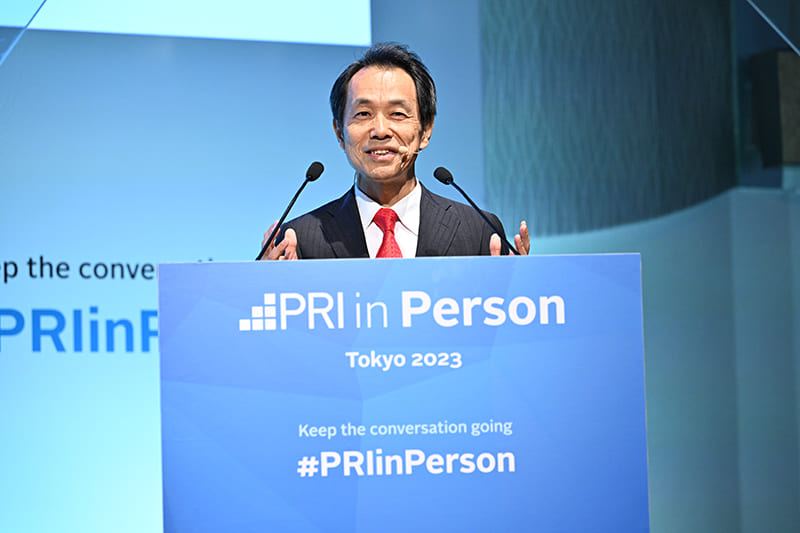
Climate and nature
The second day of the annual global conference highlighted the degradation of nature and biodiversity, closely interconnected to the climate change posing a major threat to the world’s sustainable future.
In the plenary session “Climate and nature: where are we now, and what action can investors take?” experts discussed how much institutional investors have contributed to the mitigation of global warming so far and what else they should do.
“The good news is action is happening. The bad news is it’s not enough and it’s not happening fast enough if we are to limit global warming to 1.5 degrees,” Tamsin Ballard, PRI’s chief initiatives officer and the moderator of the session, said at the start of the panel discussion. She also said we need to be halting and reversing biodiversity loss by 2030, based on the Kunming-Montreal Global Biodiversity Framework agreed upon last December.
Jim Skea, chair of the Intergovernmental Panel on Climate Change (IPCC), a U.N. body for assessing the science related to climate change, warned, “The latest report said that it was more likely than not that we would reach 1.5 degrees of warming by the early 2030s and that it would be very likely that we would exceed these 1.5 degrees if we did not take ambitious action.”
Skea said that if global warming reaches 2 degrees, the risks of permafrost degradation, biodiversity loss, extreme natural disasters like floods, droughts and wildfires, and potential threats to the productivity of food systems will escalate.
Although the world has succeeded in mitigating global warming by introducing renewable energy plus electric vehicles and other kinds of electrification, global carbon emissions have not yet begun to trend down, he said.
Skea pointed out two important elements that can be leading solutions against global climate crises. One is the protection of natural carbon sinks. For example, removing carbon dioxide from the atmosphere through reforestation — and avoiding releasing it in the first place by cutting down forests — represents at the moment the biggest chunk of carbon dioxide removal. Likewise, restoring wetlands and peat lands can take carbon dioxide out of the atmosphere.
Also, technology offers potential solutions. It is important to continue developing technologies for carbon capture and storage as well as direct air capture of carbon, Skea said. These solutions, which need a long time to achieve, will not be done uniformly throughout the world because different countries will choose different mixes of solutions.
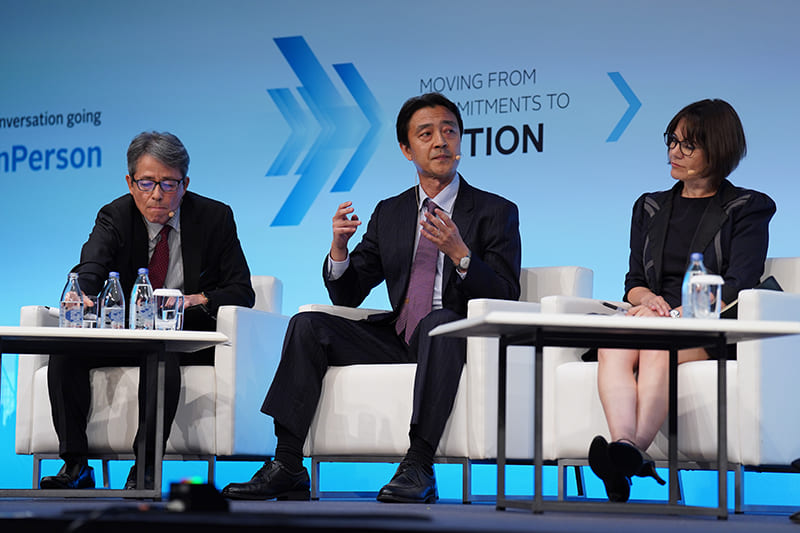
Frameworks for disclosure
As for nature-related financial reporting by companies, a hot topic in recent years, Tony Goldner, the executive director for the Taskforce on Nature-related Financial Disclosure (TNFD), an international initiative to provide frameworks for disclosing and managing nature-related risks and impacts, said it has taken actions to help companies gain sufficient nature-related data for their disclosures, although many are still struggling to gather such data.
“Once you put your feet in the water and get started with pilot testing with looking for nature-related issues, it is possible there’s actually tons of data out there, and the insights can be incredibly helpful both in terms of thinking about risk, thinking about opportunity and thinking about stewardship action and stewardship strategies that asset managers and asset owners should be looking at,” Goldner said, referring to what he found in the process of pilot testing conducted before the TNFD announced its final recommendations in September. To decide on the final version, the initiative released a series of beta versions after pilot testing by companies and financial institutions and receiving broad feedback.
The task force released 14 recommendations for companies to disclose nature-related risks and opportunities. Eleven are based on what the TCFD already had released for climate-related disclosures in 2017, covering four areas: governance, strategy, risk management, and metrics and targets.
Goldner said the TNFD added three additional disclosures that are particularly relevant to the nature context: around value chains; stakeholder engagement, particularly with Indigenous peoples and local communities; and sensitive locations that a business or a financed portfolio is interfacing with. Such sites include areas that are water-stressed, value-protected or important for biodiversity.
At the end of the panel discussion, PRI announced that it is launching a new stewardship initiative focused on nature, called Spring.
It aims to maximize the investment community’s contribution to halting and reversing biodiversity loss by 2030. By doing so, the initiative also aims to contribute to other sustainable development goals, including mitigating and adapting to climate change and advancing human rights, PRI said.
“The new initiative Spring is going to be focusing on land loss, forest loss and land degradation, initially very much in recognition that these are key drivers of nature and biodiversity loss, and of course contributing significantly to climate change,” said Ballard, the moderator of this session.

Koike cites efforts by Tokyo
The second day of PRI in Person also had a keynote speech by Tokyo Gov. Yuriko Koike. In her video message, she presented the metropolitan government’s efforts to reduce carbon emissions, citing as an example a program for large offices that has reduced emissions by 33% since 2010. Koike also mentioned Tokyo’s enactment of an ordinance requiring construction companies to install solar panels on all new residential buildings from April 2025. She said the city is promoting the Tokyo Green Finance Initiative to support and finance green-related business and will issue a total of $2.77 billion in ESG-oriented bonds. Tokyo also has established the Social Impact Investment Fund, with about $20 million in funds available to invest in startups contributing to improving citizens’ well-being, she said.
“Finance is a great force that can pave the way for solving social issues and effectively unite the power of people,” Koike said in the speech.
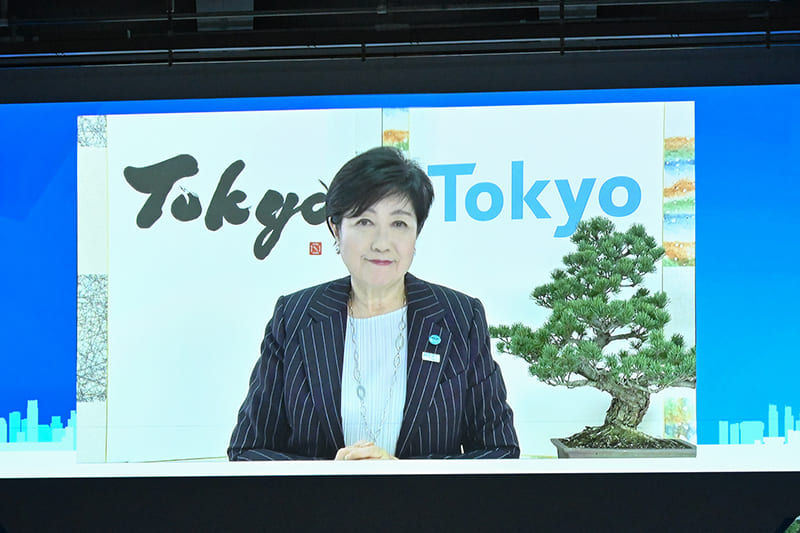
SDG investing
On the third day, breakout sessions covered a wide range of topics, from climate action and nature-related financial disclosure to human rights issues and ESG financial analysis. One session focused on “sustainability development investing” (SDI) — deploying capital that can make a positive impact on sustainable development, using the SDGs as a basis for measurement.
The U.N. has said only 15% of the goals are likely to be met by the 2030 deadline, and the session discussed how the public and private sectors can collaborate to improve outcomes, and what the metrics for sustainable investments should be.
Claudia Kruse, the managing director for global responsible investment and governance at APG, a global pension investment firm based in the Netherlands, explained how its clients prompted it and another Dutch pension investor, PGGM, to develop a methodology to identify responsible and sustainable investment opportunities. They call the methodology “SDI taxonomies.” In 2020, they also set up an initiative for institutional investors, called the Sustainable Development Investments Asset Owner Platform, with other global firms from Australia and Canada.
Related to such movements by asset owners, Gavin Power, the chief of sustainable development and international affairs at Pimco and the moderator of this session, stressed the importance of cooperation between the public and private sectors.
“To produce lasting outcomes, public authorities, development banks and private finance need to collaborate as never before, especially in emerging and frontier markets,” he said.

To better communicate with investors, the World Bank has designed the Sustainable Development Bond Framework to provide them with information on how World Bank bonds support sustainable development, since investors no longer prioritize an issue’s financial return, liquidity and credit quality alone, said Yoshiyuki Arima, a representative at the World Bank Treasury in Tokyo. The framework helps to explain how the bank uses the money it borrows from global investors, and includes examples of the types of projects and programs that bonds support.
Arima also discussed the World Bank’s UNICEF bond, issued in 2021, as an example of collaboration between the public and private sectors. UNICEF usually relies on donations from member countries but faced an urgent need for more financing for health care and education projects for children in developing countries hit by the COVID-19 pandemic. It procured $50 million through the bank’s $100 million bond. Dai-ichi Life Insurance Co. became the lead investor.
“This is a typical win-win situation for both issuers and investors,” said Hidehiko Sogano, the chief sustainability officer, member of the board of directors and managing executive officer at Dai-Ichi Life.
Discussion panelists noted that the biggest problem in measuring sustainable impacts is a lack of methodology. “There’s still no good solution as to how to quantify the impact of various SDGs investments and what are the appropriate indicators. And those are questions we are focusing right now,” Arima said. Kruse added, “Doing it (quantification) in a manner that is rigorous and credible is actually, I would say, a collective challenge that we should address.”
In the last plenary session, PRI Chair Martin Skancke called for leadership in the investor community and beyond. At his last meeting as PRI chair, he said, “There is a need for leadership from individuals — from you, and from the institutions you represent.” Investors and institutions need to develop an understanding of emerging ESG issues, share their insights with the wider community and develop tools and metrics to track progress, he added.
“There is an important role here for the PRI to work with you on addressing the current issues we’re facing — and the new, emerging issues that we will be facing,” Skancke told the audience.
Aiming to highlight efforts related to sistainability, The Japan Times gave its support to this event by becoming a media sponsor.

